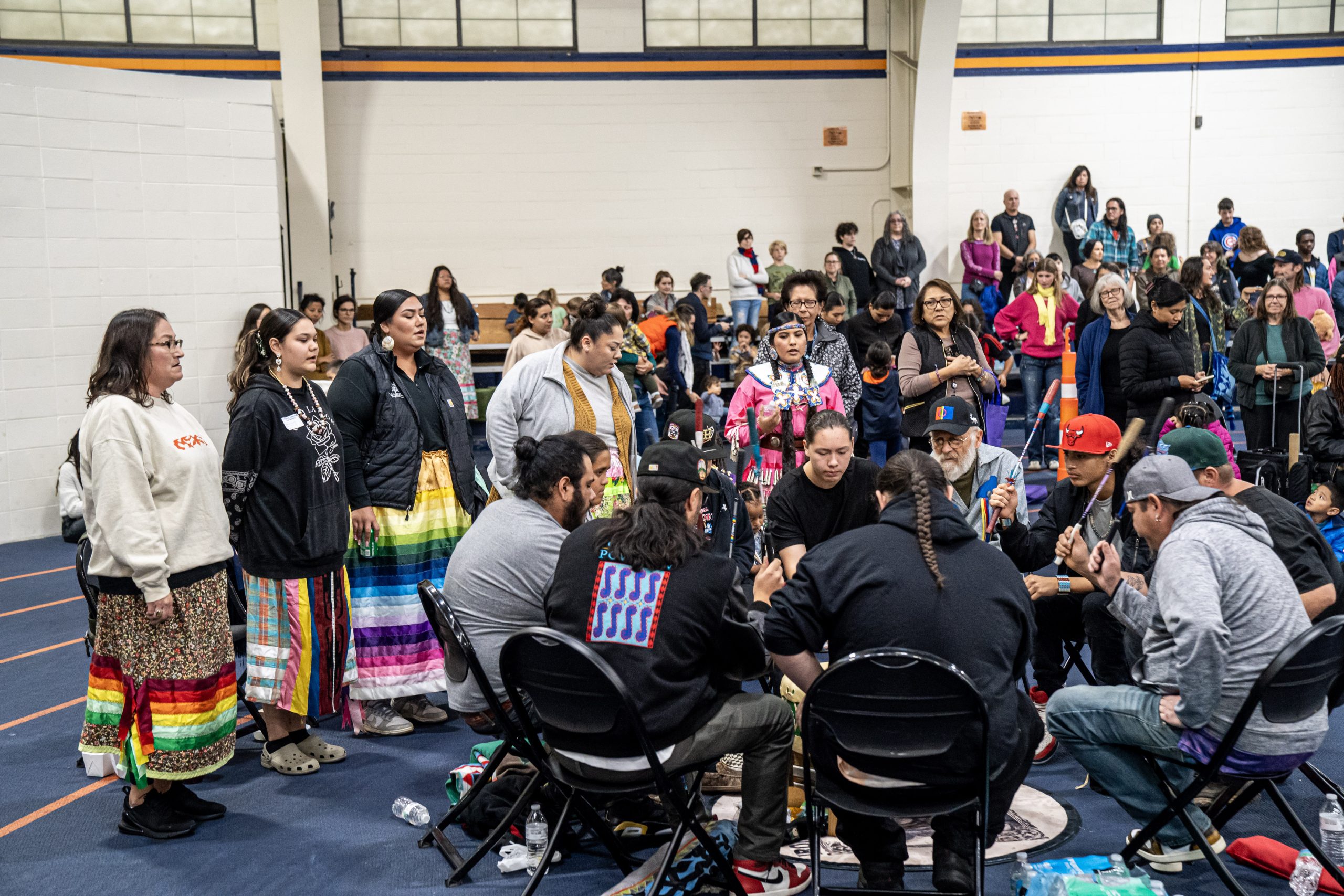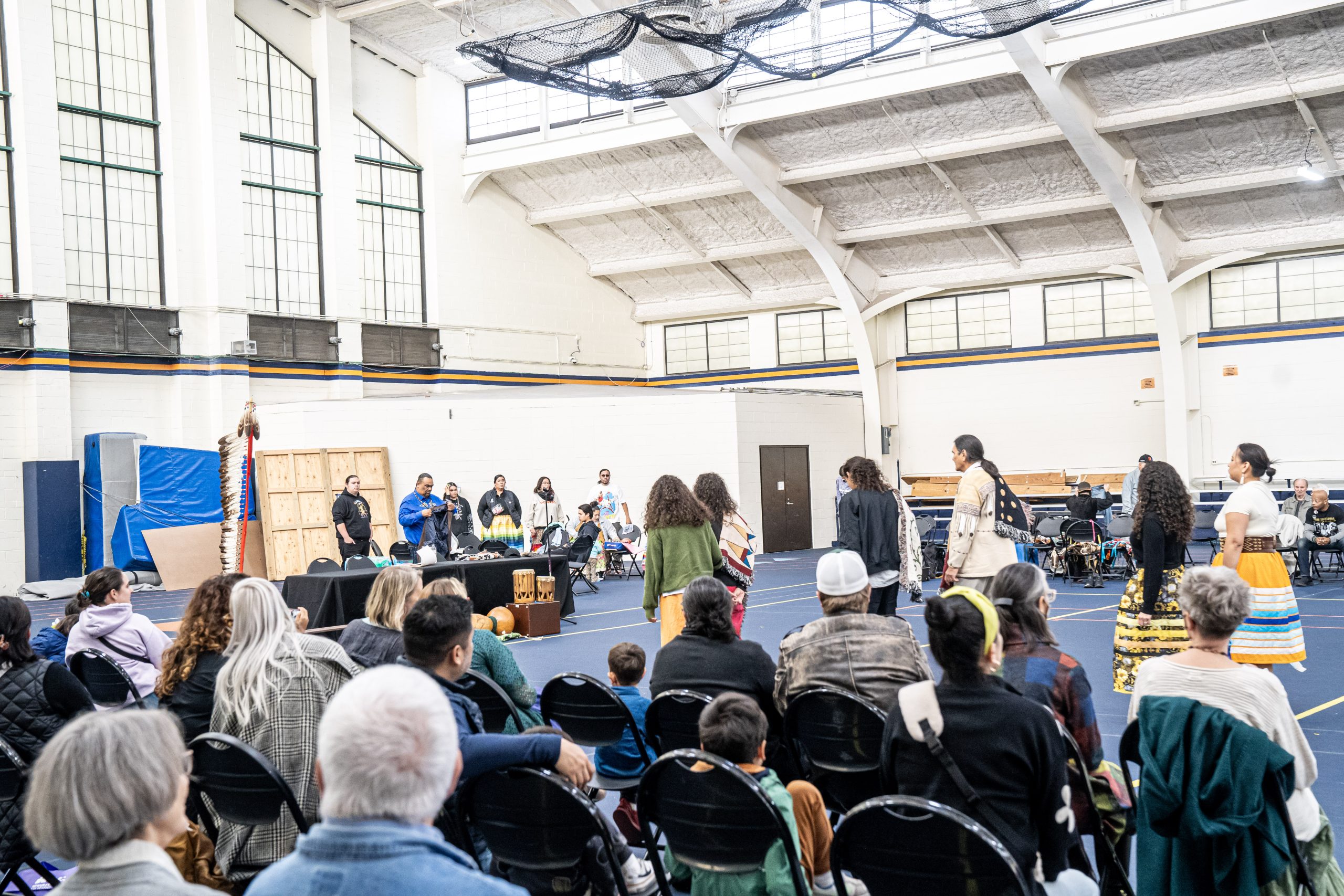
A Journey of Transformation: How Mitchell Museum Became
Gichigamiin Indigenous Nations Museum
/Gi-che-gammeen/ – Means Great Lakes

Why Change?
The Drive Behind the Transformation
Feedback from museum members, donors, partner organizations, and local residents highlighted the desire for the museum’s identity to resonate more deeply with these communities.
The rebranding journey for the Mitchell Museum of the American Indian
began with a fundamental question: How can we better represent the people and stories at the heart of our mission?
With over four decades of dedication to showcasing the Indigenous histories of the U.S. and Canada, the museum had long been a respected institution. However, as times evolved, so did the need for our identity to reflect deeper, more focused values. This desire sparked the conversation about aligning our outward image with the growing voices of Native communities, particularly those rooted in Chicago and the Great Lakes region.
The Very First Survey
Involving the Community
With the conceptual groundwork in place, the next step was to ensure that the rebranding would reflect the true spirit of the community. The museum initiated a series of outreach efforts, culminating in the first survey sent to Native communities, members, and local supporters.
This initial survey posed a crucial question:
Do you agree with rebranding the museum? The goal was to gauge whether the community supported a change in identity to better align with the Great Lakes’ Native cultures and Chicago’s Native community.
Survey Highlights
- The majority expressed strong support for rebranding, indicating an eagerness for an identity that better represented their heritage and stories.
- A significant portion of respondents shared thoughts on maintaining a balance between tradition and modern representation in the new brand.
- Constructive feedback was provided on key themes and symbols to be included in the new name and logo to ensure cultural significance.
Outcome & Visuals
Visuals: Screenshots of the survey question asking for agreement on rebranding, bar charts showcasing the response distribution, and quotes reflecting community perspectives.
Milestones
The Rebranding Timeline
Stage 1
How We Got Here
The Initial Question and Community Engagement
The journey began with an important question: Should the Mitchell Museum of the American Indian rebrand? This stage was marked by deep reflection on our growth and the need for alignment with our evolving mission. To ensure that this decision was well-informed, we broke out into specialized groups and conducted listening sessions. These sessions included input from various community members, stakeholders, and cultural leaders, helping us to understand diverse perspectives. This thoughtful approach laid the groundwork for asking the community whether rebranding was the right path forward.
Key Highlights
- Multiple listening sessions with three to four different focus groups.
- In-depth discussions among specialized teams.
- The question that set everything in motion: Should we rebrand?
The Public Speaks: Survey Results and Community Support
With a strong foundation established, the next step was to take the question to the public. We launched an extensive survey to capture the opinions and sentiments of our community. The response was overwhelming, with around 600-700 votes—a testament to the level of engagement and investment in the museum’s future. The survey results revealed that 80-90% of respondents supported rebranding as the right decision for the Mitchell Museum. This phase highlighted the incredible enthusiasm and encouragement we received, showcasing that the decision to rebrand was not only thoughtful but also backed by broad support.
Key Highlights
- High participation rate of 600-700 responses.
- 80-90% agreement on the decision to rebrand.
- Strong community engagement and positive feedback that reinforced the decision.
Stage 2
Should We Do This?
Planning the Path Forward
Defining the Naming Approach
After confirming that rebranding was the right step, we moved into the phase of shaping our intentions. This involved exploring different naming mechanisms, evaluating whether a descriptive name or a native name would best represent the museum’s vision. Initially, we pursued descriptive names, presenting options to the board and stakeholders. During one pivotal meeting, a surprising and exciting pivot occurred: it was suggested that a Native name might be more fitting. This shift led to even greater positive outcomes, emphasizing the museum’s commitment to authenticity and cultural significance.
Key Highlights
- Consideration of various naming mechanisms, including descriptive and native names.
- A strategic pivot during a key meeting that redirected the focus toward choosing a Native name.
- Enhanced community and board support following the pivot.
Evaluating Core Values and Language
In this stage, we began refining the options to align with what was most meaningful to the museum and the community. We asked critical questions: Should the name be location-based? Should it evoke a specific feeling? Community feedback provided insights that helped us prioritize these aspects.
The results were clear, and we were able to narrow the choices down to ten words across three different languages. This rigorous process further narrowed the list to three final words that encapsulated the museum’s vision and commitment to representing the Native communities of the Great Lakes region.
Key Highlights
- Analysis of community responses on the importance of location-based and feeling-based naming.
- Narrowing down from ten to three potential names in different Native languages.
- Final selection criteria based on community resonance and cultural significance.
Narrowing Down the Meaning

The Decision
Gichigamiin Indigenous Nations Museum
/Gi-che-gammeen/ – Means Great Lakes






